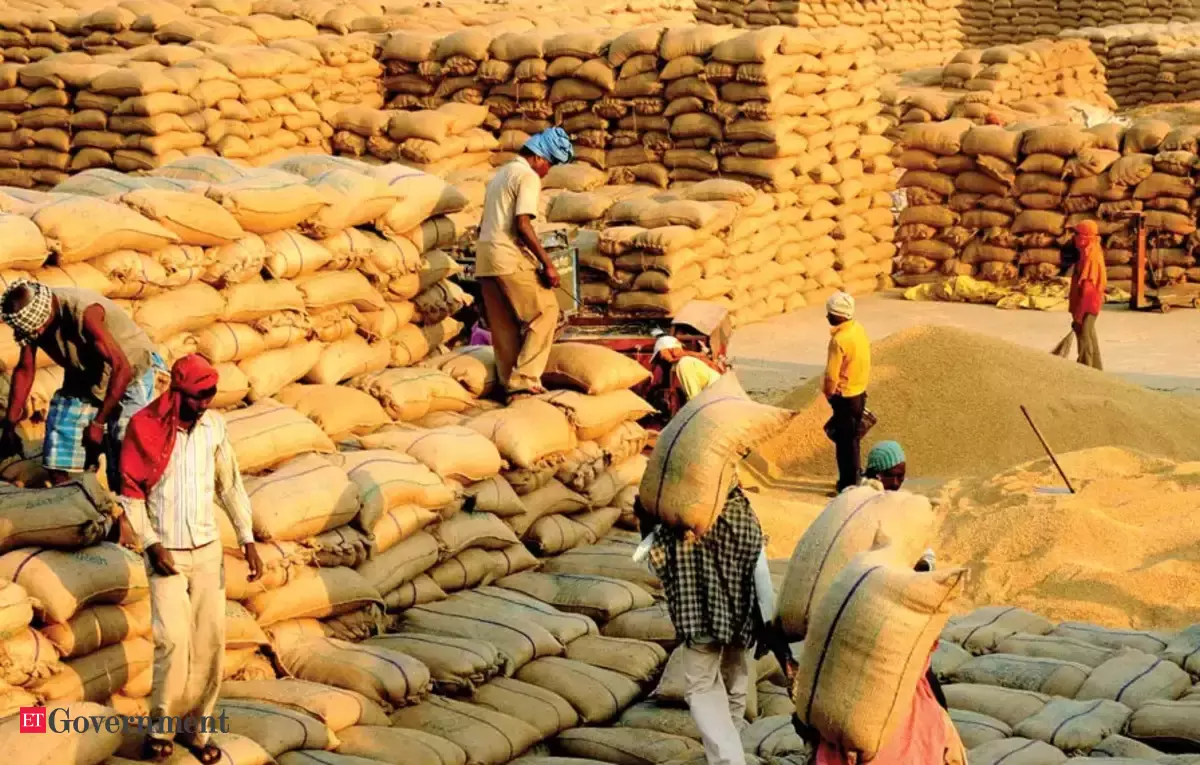Abstract
Agriculture plays an instrumental role in an economy by preparing its human resource for utilising opportunities and facing challenges of tomorrow. India, previously called ‘Golden Bird’ has a sky of opportunities in the sector, despite that it continues to face issues in optimising the food grain procurement, storage and distribution systems. The paper scrutinises India’s food grain procurement mechanisms, with a focus on how effective the Centralised Procurement System managed by FCI is, alongside the Decentralised Procurement System adopted across different states in the country. The study points out the different limitations of the Centralised Procurement System, related to high administrative costs and inefficiencies due to centralization, and contrasts these with a number of benefits from DCP, including reduced economic costs with better aligning of local needs.
Case studies from Jammu & Kashmir, Tamil Nadu and Haryana illustrate the effect of these systems on food security and farmer’s welfare. This paper, therefore, explores that the DCP system offers better efficiency and support to farmers while noting the merits of both systems. It is through infrastructural gaps, political conflicts, and digital inequalities that lie the path to improvement of effectiveness in India’s food grain procurement system. Therefore, this research shows the need for a balanced approach using the strengths of both systems to ensure sustainable food security in India and prosperity of its farmers.
Keywords: Food grain procurement system in India, Decentralised Procurement System, FCI, Public Distribution System
Introduction
It is often said that ‘Agriculture is the backbone of the Indian economy’. Agriculture is indeed an important sector not only because it is responsible for the survival and nutritional needs of 1.44 billion people, but also as it engages 54.6% of the total workforce in the country. India has an unmatched growth prospect in terms of food production : it possesses 1,656,780 km2 of arable land, out of which only 1,765,260km2 has been cultivated (as per Land Use Statistics, 2020). In terms of food grain production, India stands at the second pedestal after China. In the year 2022- 23, the total food grain production in the country was approximately 3296.87 Lakh tonnes. Given India’s diverse topographic conditions resulting due to its unique geographical location, it is believed to be privileged to provide ground for a great variety in production ranging from food crops such as wheat, rice, pulses, gram etc to oilseeds, groundnut etc.
Well, despite having such a favourable ecosystem, India’s food grain production has still not reached the apex. This has occurred due to interplay of various factors. In this paper, we will focus on the food grain procurement system in the country. It has been noted that most of the food grain producing states such as Uttar Pradesh, Chhattisgarh, etc lack the infrastructure required for end-to-end handling of food grains produced in the state. Small farmers that barely manage to keep up their crop health find it difficult to organise their produce and transport it safely to the market, thus losing their chance to earn reward for their year-long hard work. Unable to reach the organised markets, these farmers are forced to sell their produce to retailers or middlemen and end up obtaining below subsistence prices, pushing the farmers in debt.
Food Corporation of India (FCI) was established in 1965 with the objective to formalise and streamline the food procurement and distribution system in India. It worked towards improving the procurement, storage and distribution of food grains, thus transforming India from a food deficit country to a food secure and food surplus nation. Later, PDS was introduced to support the objectives of FCI and Green Revolution in the country. At the heart of all these moves was ensuring food security, firstly and more essentially, ‘enhancing farmer’s welfare’ in the country. Centralised and decentralised procurement schemes today work bilaterally in states to regulate the food procurement system in the country.
Food grain market at the time of independence
India has come a long way since the day of its independence. The landscape of the agriculture sector has undergone a major transformation since then. The new India was all set to start afresh, to explore innumerous possibilities that lie ahead in future. But with this hope, India was also carrying the burden of responsibilities on its young shoulders; the responsibility to cater to food security in the nation, to build healthy and well nurtured human capital. At the time of independence, 85% of the population resided in rural regions and was dependent upon agricultural income to sustain their livelihood. That phase, wherein agricultural produce was mainly monsoon dependent, lacked infrastructure and support of modern technology, saw declining agricultural output.
Further, India faced food shortages due to rising demand and repeated instances of droughts every now and then. As described by M S Swaminathan, ours became a ‘ship to mouth’ economy as we had to rely on wheat imports from the US for sustaining. Systems introduced by the Britishers such as the Zamindari system, Ryotwari system and Mahalwari system further worsened the food producer’s plight, forcing him/her into a vicious cycle of due debts and deepening poverty.
Click Here To Download The Paper


📌Analysis of Bills and Acts
📌 Summary of Reports from Government Agencies
📌 Analysis of Election Manifestos

